I’ll be honest, the 28 is almost entirely meant for tourists. During the summer, all the trams are packed with out-of-towners taking pictures and seeing the sights. That’s completely justified, though, since this tram line is incredibly scenic. The line is windy and hilly, meaning it has to use old-fashioned vehicles from the 1930’s. What more could you ask for?
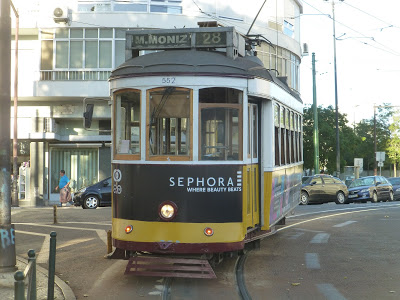 |
| A tram at its terminus. |
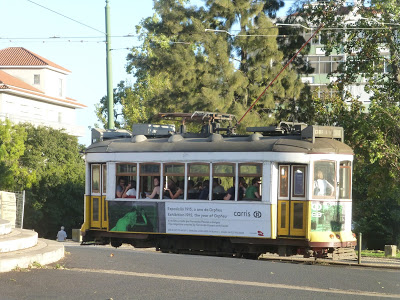 |
| That one looks crowded already! |
The 28 begins to the west of the city in a pretty local neighborhood at a rotary. Leaving the terminus, we went around the rotary and headed down R. Saraiva de Carvalho. After going by a church, the street became lined with local businesses and apartments on top. We then turned onto R. Domingos Sequeira, going down a hill.
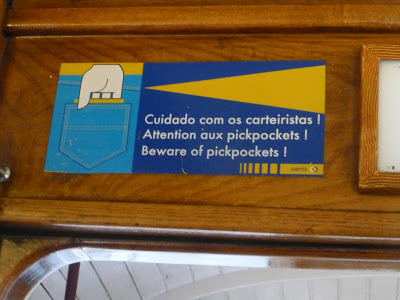 |
| Pickpockets are indeed a problem on the 28 – be sure to watch your bags here. |
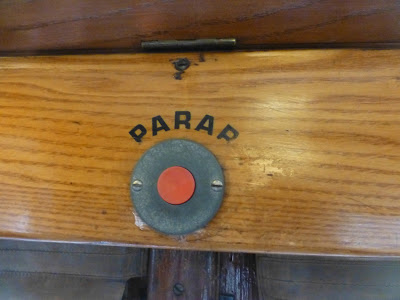 |
| I love these stop request buttons! |
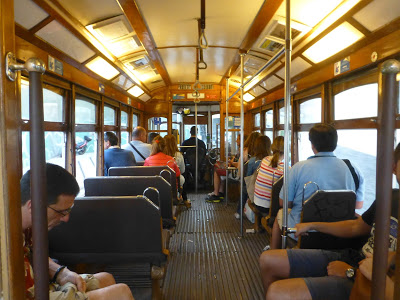 |
| Looking toward the front of the tram – it had quieted down by the time I took the picture. |
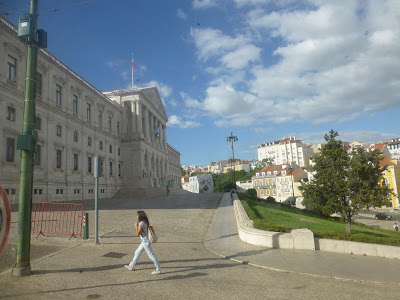 |
| That’s a cool building! |
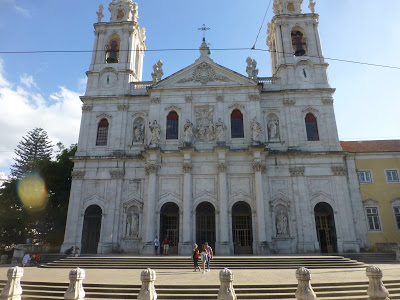 |
| And indeed, that’s another cool building. |
We turned onto Calcada de Estrela, a narrow downhill street. The line then split in two, with our single track heading down R. Sao Bento. Going by some quaint apartments, we then turned onto the narrow R. de Poco dos Negros. We rejoined the outbound line at Calcada do Combro.
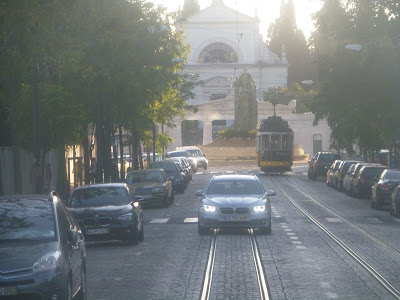 |
| The back of the tram is a very fun place to stand. |
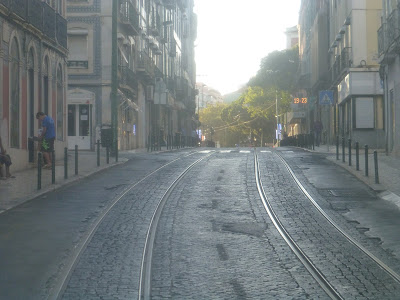 |
| Not much traffic on this street. |
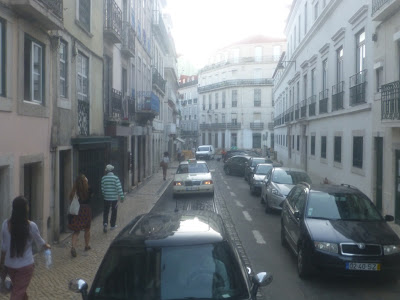 |
| So much for no traffic. |
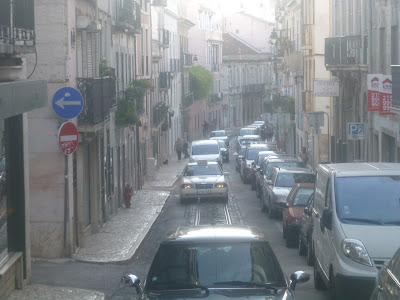 |
| It must be horrible to drive along these narrow streets shared by the 28. |
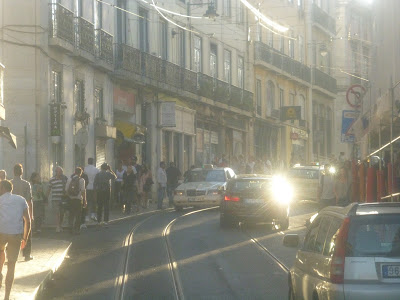 |
| The sun appears to be going down. |
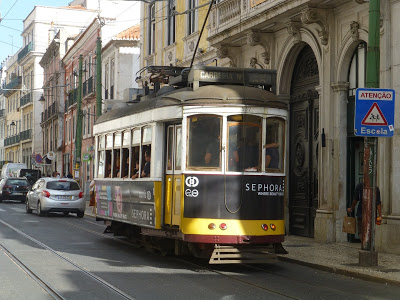 |
| I took some pictures of the trams earlier in the day on this section of the line. |
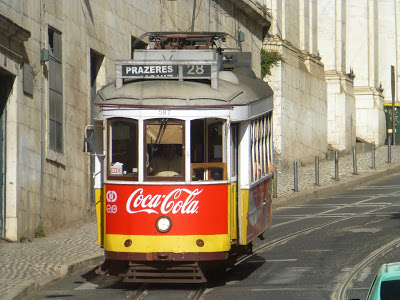 |
| A tram coming down a hill… |
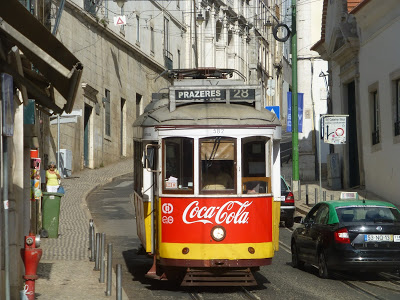 |
| …and another tram coming from the other way. |
The street became Rua de Loreto, then we made our way around a small plaza. The inbound and outbound lines split again after that, and we headed single-track down R. Antonio Maria Cardoso. We made a steep sharp turn onto R. Victor Cordon and rejoined the outbound line on the next block. After some curves, we headed up Calcada Sao Francisco, entering the historic (and touristy) Baixa neighborhood.
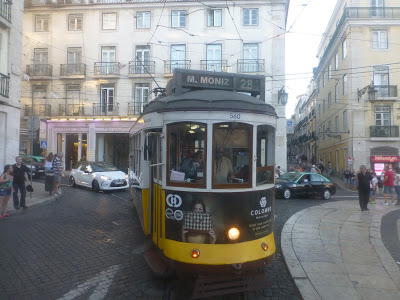 |
| This pesky tram followed us for much of the journey. |
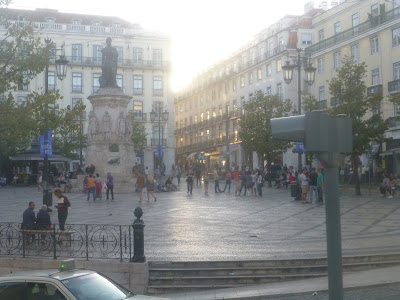 |
| The plaza. |
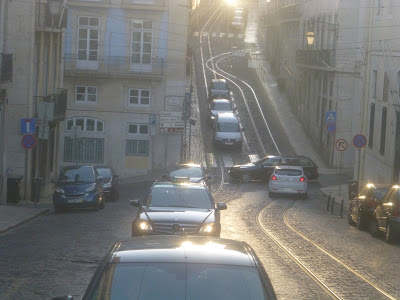 |
| I love how you can see at the top of the hill how the right track has to overlap with the left in order to make the sharp turn! |
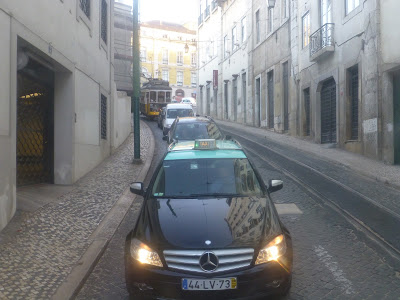 |
| A residential street. |
It didn’t take too long to cross the Baixa – we were on a straightaway and it’s a narrow neighborhood to begin with. After that was the Alfama neighborhood, which is where the route really starts to get interesting. We navigated our way to Largo Santo Antonio de Se, then onto R. Augusto Rosa. We passed the Se de Lisboa, a cathedral, then twisted and turned through hilly, constantly changing streets.
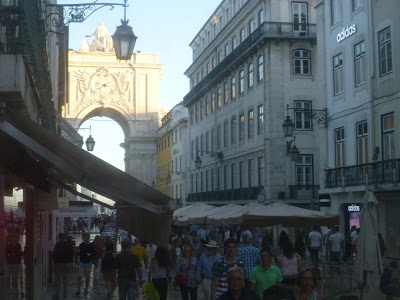 |
| Did I mention the Baixa was touristy? Look at those crowds! |
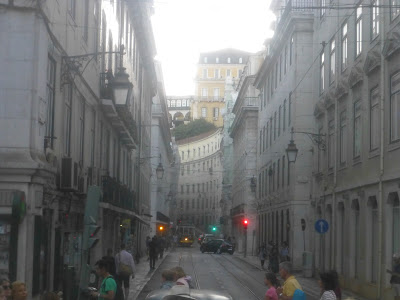 |
| Looking down the street. |
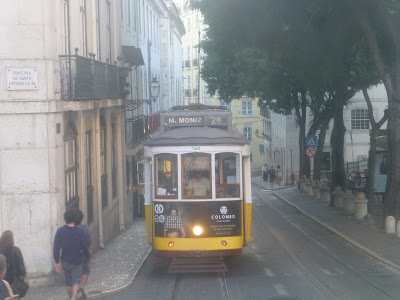 |
| The other tram following us up a hill. |
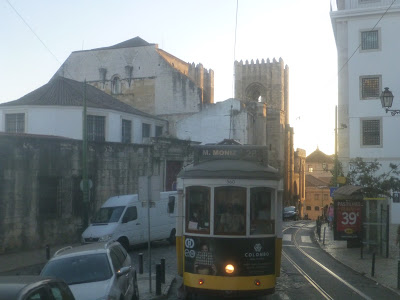 |
| I love that mini-castle! |
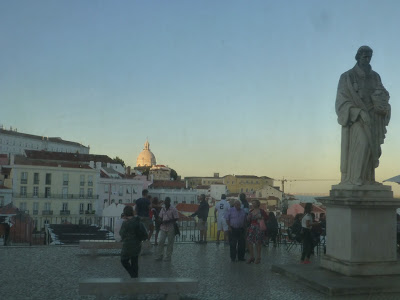 |
| An overlook. |
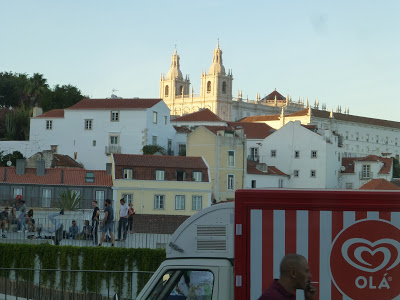 |
| A church up in the hills. |
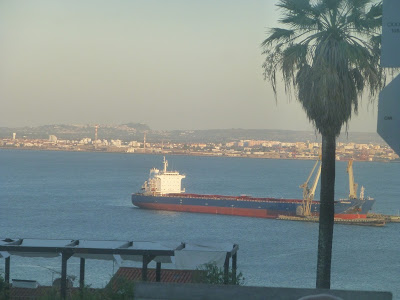 |
| A big ship out in the water. |
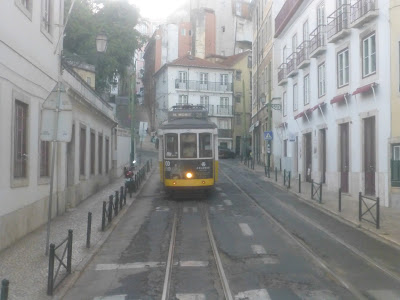 |
| I see you’re still following us, other tram. |
Eventually we turned onto Escolas Gerais, which became so narrow that we were reduced to a single track. It became double again at Calcada de Sao Vicente, but the street was still tight, with old apartments along the sides. At Graca there was a loop for short-turn runs, but we continued up Rua da Graca. with the buildings getting slightly newer.
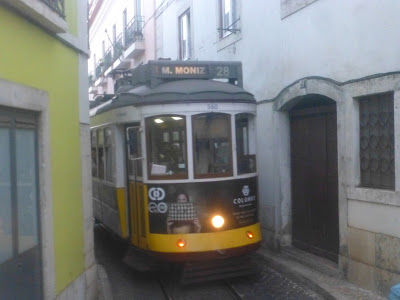 |
| Look how narrow this is! |
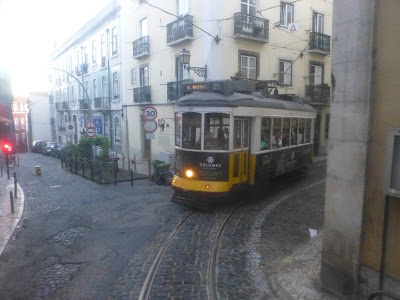 |
| Making another turn. |
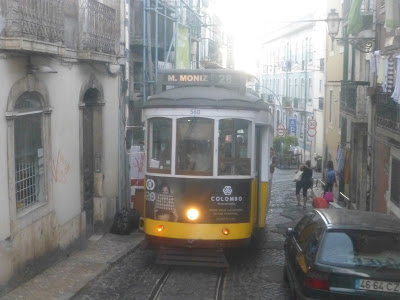 |
| Still incredibly narrow. |
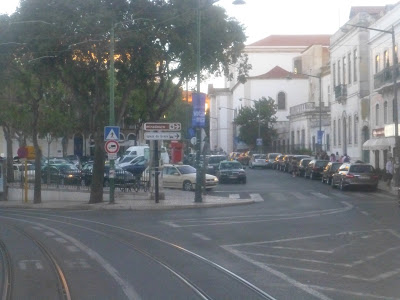 |
| This is just after Graca. |
We then turned onto R. Angelina Vidal, heading downhill. The inbound and outbound tracks split once more later on, where we went down Rua do Forno do Tijolo. After a few more sharp turns, it became double-track once more on R. Maria Andrade.
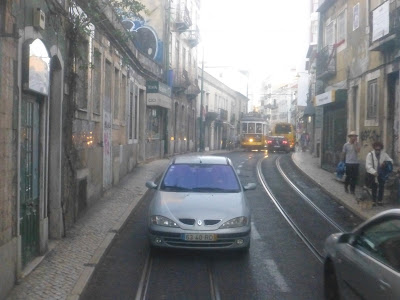 |
| That second tram never strays far. |
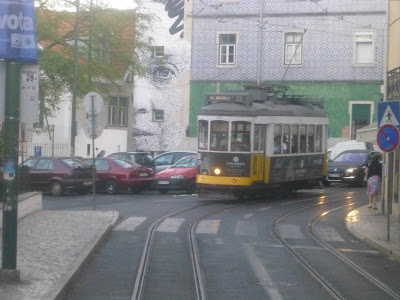 |
| Making a slight turn. |
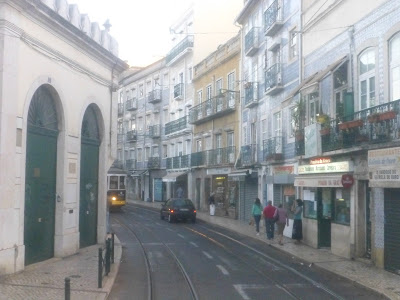 |
| I see you poking your head around that corner, second tram. |
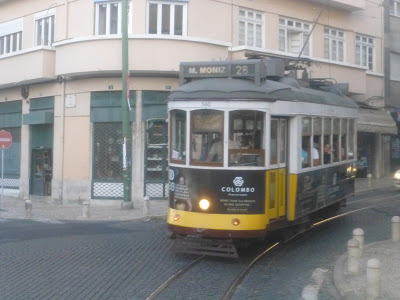 |
| Making a single-tracked turn. |
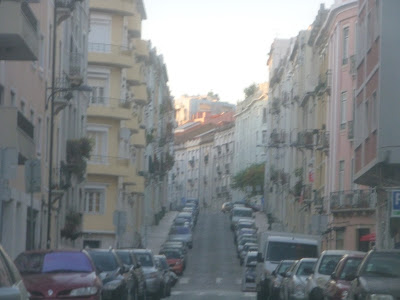 |
| Blurrily looking up a hill. |
We then turned onto Av. Alm. Reis, which was weird in that this was the first legitimately wide street on the whole trip! Wide as in it even had a little median with trees on it. We went by the Intendente Metro station and continued on this wide straightaway. After passing through a small Chinatown, we looped around a small plaza and reached the 28’s terminus, Martim Moniz.
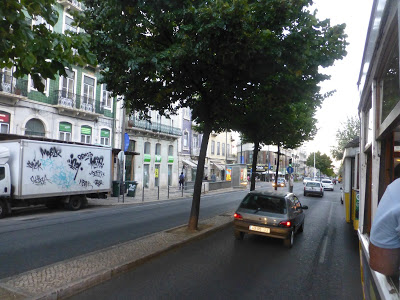 |
| Why’s the street so wide? This is weird! |
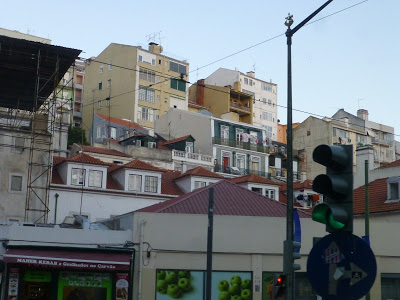 |
| Looking up into the hills. |
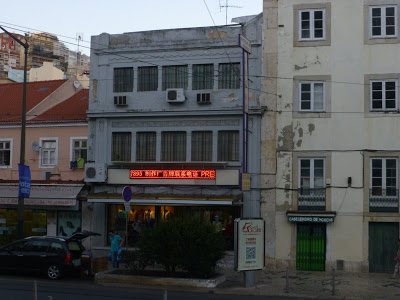 |
| A building with Chinese writing on it. |
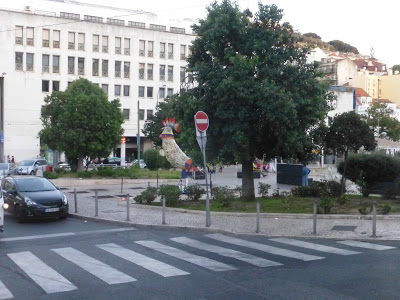 |
| I love that rooster sculpture! |
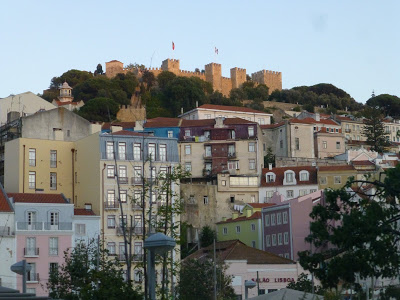 |
| A castle in the hills (Castelo de S. Jorge). |
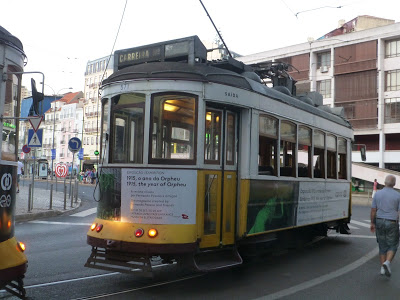 |
| A tram at Martim Moniz. |
So is the 28 worth taking? Absolutely. Even if you’re not into public transportation or anything, the 28 is still amazing. The historic trams are awesome, you get to see some interesting parts of the city, and it only costs a bus fare! Now if you’re in a hurry, the 28 might not be for you since it goes pretty slowly, but if you’re looking to just see the sights, the tram is a must.











































The photo of the tram coming out of the narrow street is amazing. Imagine if you lived in the building, and had to come out of the doorway every day, hopefully not as the tram came by 18" from your front step. They'd never do it that way if they were building it fresh, but it's cool that they kept it.
Eric